How to Balance Minimalism and Sentimental Value
Category: Lifestyle
Finding Harmony Between Minimalism and Sentimental Keepsakes
If you've embarked on the journey toward a simpler, clutter-free life, you may have hit a familiar roadblock: the challenge of balancing minimalism with the emotional ties we have to our belongings. You're not alone. Many individuals passionate about simplifying their environment struggle with letting go of items that hold deep personal or family significance. Maybe you’ve already decluttered your home but feel a pang of guilt about donating that old watch, a gift from a loved one, or documents and photos that stir memories. You're here because you want practical guidance on how to respect those sentimental connections without sacrificing your minimalist goals — a way to cherish what matters yet keep your living space clear and peaceful.
This post is crafted with your needs in mind: practical, actionable advice designed for those familiar with minimalism but seeking to navigate the emotional complexity of meaningful possessions. Unlike generic decluttering guides, we dive specifically into blending minimalist principles with sentimental value, offering ways to honor memories without creating clutter. By the end, you’ll gain insights on selective preservation, meaningful display, digital archiving, and mindful letting go, tailored to inspire and empower your minimalist journey while honoring your past. Keep reading to discover how to achieve that delicate balance, making your space both simplified and soul-nourishing.
- Finding Harmony Between Minimalism and Sentimental Keepsakes
- Understanding Sentimental Value: Why We Hold on to Memories Through Objects
- Defining Your Personal Minimalism: Setting Clear Priorities and Values to Guide Your Sentimental Decisions
- The Art of Mindful Decluttering: Techniques for Assessing the Emotional Weight and Practical Worth of Items
- Creative Ways to Preserve Sentimental Items Without Clutter
- Designing Meaningful Displays: Showcasing Keepsakes That Enhance Your Space and Well-being
- Creating Rituals to Honor Memories Beyond Physical Objects
- Managing Gifts and Heirlooms: Communicating Boundaries While Respecting Family Traditions
- Building a Sentimental Inventory: Organizing and Cataloguing Your Keepsakes for Clarity and Ease
- Overcoming Emotional Barriers: Tips for Letting Go Without Regret
- Maintaining Balance Long-Term: Integrating Sentimental Mindfulness into Your Minimalist Lifestyle
Understanding Sentimental Value: Why We Hold on to Memories Through Objects
Sentimental value is a powerful psychological force that connects us to our past, identity, and relationships through tangible items. Unlike ordinary possessions, objects with sentimental significance evoke emotions, stories, and memories, making them inherently difficult to part with—even when striving for a minimalist lifestyle. Psychologists explain this attachment as a form of emotional investment, where certain belongings become symbols of love, milestones, or personal growth. This is why a worn-out teddy bear from childhood, a handwritten letter, or an heirloom can hold immeasurable importance beyond their practical use.
Several factors influence why some items carry stronger sentimental weight:
- Emotional Associations: Items linked to significant people or events trigger deep feelings, nostalgia, or comfort.
- Identity Reinforcement: Keepsakes often represent key aspects of our identity or life story, helping us maintain continuity through change.
- Social Connection: Objects from loved ones or family heritage can embody a sense of belonging and lineage.
- Memory Anchoring: Physical items serve as tangible anchors for memories that might otherwise fade over time.
Understanding this psychology not only explains why minimalists struggle to let go of certain things but also provides insight into how to approach sentimental clutter thoughtfully. It is about recognizing the intrinsic value of these possessions without letting them overwhelm or dominate your living space. In the next sections, we will explore strategies to honor these heartfelt connections while maintaining clarity and simplicity in your home.
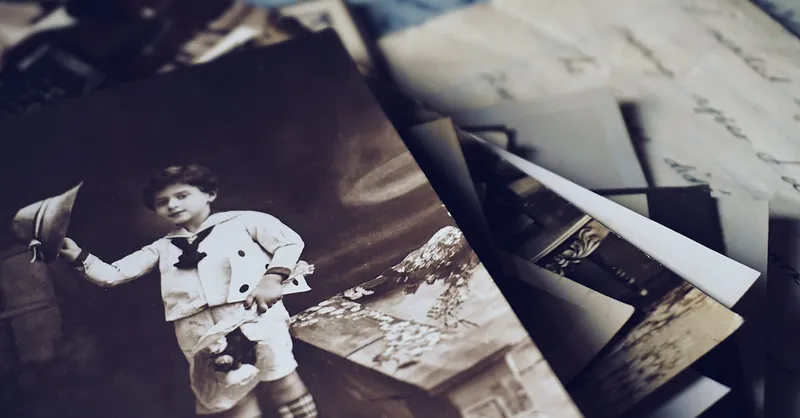
Image courtesy of Suzy Hazelwood
Defining Your Personal Minimalism: Setting Clear Priorities and Values to Guide Your Sentimental Decisions
Embracing minimalism doesn’t mean adopting a one-size-fits-all approach; it’s a deeply personal journey that requires aligning your lifestyle choices with your unique emotional needs and core values. Defining your personal minimalism is the crucial step that enables you to make intentional decisions about which sentimental items to keep, display, or release—all while honoring your mental and emotional well-being.
Start by reflecting on what truly matters to you. Ask yourself questions like:
- What feelings or memories do I want to preserve through my belongings?
- Which possessions actively enrich my life or inspire joy and connection?
- Am I holding on to items out of obligation or guilt, or because they genuinely represent my identity and values?
By clarifying your priorities, you create a guiding framework for evaluating sentimental objects. For example, if family heritage and traditions are central to your identity, preserving select heirlooms may take precedence. Conversely, if freedom and simplicity are your guiding principles, you might prioritize keeping only a few meaningful pieces that truly serve your emotional needs.
This personalized lens helps you filter through sentimental clutter with greater clarity and compassion. Instead of feeling pressured to keep everything “just in case,” you learn to curate collections of memories that resonate with your present life and vision for the future. Ultimately, your minimalism becomes an empowering practice—a way to honor your past while living intentionally in the now.

Image courtesy of Photo By: Kaboompics.com
The Art of Mindful Decluttering: Techniques for Assessing the Emotional Weight and Practical Worth of Items
Mastering mindful decluttering is essential when balancing minimalism with sentimental value. Rather than rushing to discard possessions, this thoughtful process involves evaluating each item's emotional significance alongside its practical function. By doing so, you respect the memories attached while preventing your space from becoming overwhelmed by clutter.
Techniques for Mindful Evaluation
- Hold and Reflect: When considering a sentimental item, take a moment to hold it and reflect on the feelings it awakens. Ask yourself:
- Does this object bring me genuine joy or comfort?
- Does it represent a meaningful story or milestone in my life?
-
Am I keeping it out of nostalgia or obligation?
-
Assess Practical Worth: Evaluate whether the item has current or potential practical use, or if it serves solely as a memory trigger. Items that can be repurposed or displayed often add both emotional and functional value.
-
Categorize Into Keep, Repurpose, or Let Go:
- Keep: Select a limited, intentional collection of truly special items that consistently enhance your life.
- Repurpose: Transform items with sentimental value into something useful, such as turning old t-shirts into a quilt or framed keepsakes into wall art.
- Let Go: Gently release possessions that no longer serve an emotional or practical purpose, ensuring you feel ready and at peace with the decision.
Practical Tips for Compassionate Decluttering
- Create Memory Boxes: Limit keepsakes to a designated box or container to contain sentimental clutter in one, meaningful space.
- Digitize Memories: For photos, letters, or artwork, consider scanning or photographing them to create digital archives, preserving memories without physical bulk.
- Set Clear Limits: Establish boundaries on how much space sentimental items can occupy to maintain balance between honoring memories and living clutter-free.
By integrating these mindful decluttering techniques, you can honor your emotional connections while aligning with minimalist principles—creating a home environment that nurtures both simplicity and soul.
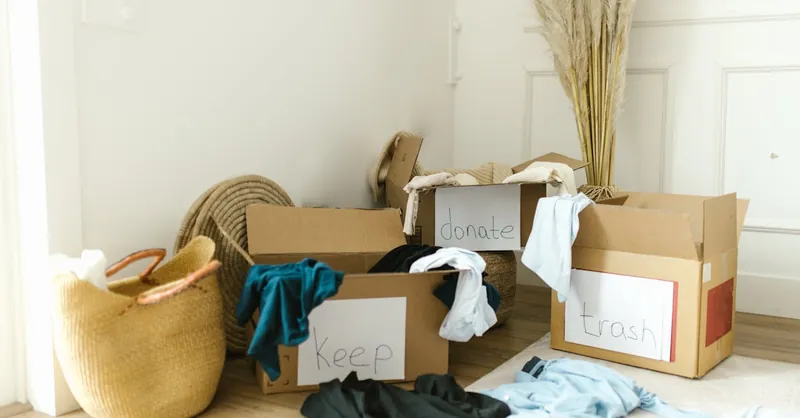
Image courtesy of RDNE Stock project
Creative Ways to Preserve Sentimental Items Without Clutter
Balancing minimalism with sentimental value doesn’t mean tossing away every meaningful object; instead, it calls for innovative strategies to honor your memories while minimizing physical clutter. Embracing creative preservation methods allows you to keep the essence of what matters most, without overcrowding your living space. Here are some effective and thoughtful ideas to help you cherish your keepsakes in a simplified, organized way.
Digitizing Photos and Documents
One of the most space-saving and accessible ways to preserve memories is by digitizing physical items such as photos, letters, cards, or important documents. Scanning or photographing sentimental items creates a digital archive that can be easily stored, shared, and enjoyed without taking up physical space. Use high-resolution scanners or smartphone apps designed for document capture to create crisp digital copies. Organize these files into clearly labeled folders or use cloud storage services for easy retrieval and added security.
Key benefits of digitizing include:
- Reducing physical clutter while safeguarding memories
- Sharing digital albums with family and friends effortlessly
- Protecting items from deterioration, loss, or damage
Creating Curated Memory Boxes
Rather than letting sentimental items spread throughout your home, consolidate them into small, curated memory boxes. Limit yourself to one or two boxes per category—such as childhood memorabilia, travel souvenirs, or family heirlooms—to maintain control over your space. Use durable, attractive containers that can be stacked or stored neatly. This focused approach encourages intentional collecting, ensuring every item inside is purposeful and treasured.
Transforming Keepsakes Into Functional Objects
Another inventive way to preserve sentimental items is by repurposing or upcycling them into functional objects that blend seamlessly with your minimalist lifestyle. For example:
- Turn old fabric scraps or baby clothes into a cozy quilt or cushion covers
- Frame special letters, postcards, or children’s artwork to create unique wall art
- Convert vintage jewelry pieces into wearable, everyday accessories
- Use select pottery or trinkets as decorative yet practical items like jewelry dishes or planters
This method not only honors your memories thoughtfully but also integrates treasured pieces into everyday life, reducing the risk of forgotten clutter.
By adopting these creative preservation techniques, you can strike a harmonious balance between honoring sentimental value and maintaining a clutter-free space. These approaches enable you to live minimally without sacrificing the emotional richness that cherished memories bring.
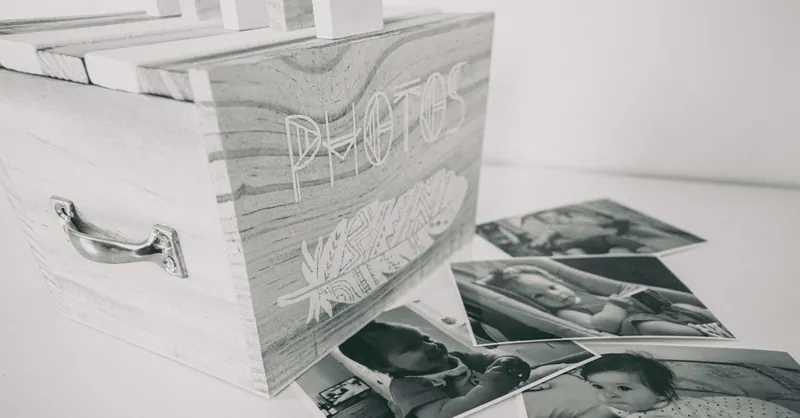
Image courtesy of Râmbeț Ioana
Designing Meaningful Displays: Showcasing Keepsakes That Enhance Your Space and Well-being
Integrating cherished possessions into your home decor can enhance both your living environment and emotional well-being, provided it’s done thoughtfully to sustain your minimalist aesthetic. The key is to design meaningful displays that honor sentimental value without overwhelming your space or creating visual chaos. By intentionally showcasing select keepsakes, you transform memories into daily sources of inspiration and comfort, making your minimalist home feel warm and personalized rather than stark or impersonal.
Strategies for Thoughtful and Balanced Displays
-
Choose a Dedicated Display Area: Limit your sentimental items to a specific location such as a shelf, mantel, or a small gallery wall. This approach maintains spatial clarity while giving your keepsakes a spotlight that feels intentional and curated rather than cluttered.
-
Embrace Negative Space: Surround your displayed items with ample empty space to allow each piece to breathe. Negative space not only highlights the significance of each item but also preserves the clean, airy feel crucial to minimalism.
-
Use Uniform or Complementary Containers: Group similar items inside matching frames, boxes, or trays to create cohesion. For example, display a collection of photographs in identical frames or arrange heirlooms inside a simple wooden shadow box. This consistency reduces visual noise and amplifies the impact of your memories.
-
Rotate Displays Seasonally or Periodically: To keep your space fresh and avoid overcrowding, consider rotating your keepsakes on a seasonal basis or whenever inspiration strikes. This way, each sentimental object gets a chance to be appreciated fully, without permanently taking up precious room.
-
Incorporate Functional Decor: Display meaningful items that also serve a practical purpose, such as a vintage clock gifted by a family member or a handcrafted bowl used daily. This dual-purpose strategy boosts both usability and emotional connection, perfectly suited for minimalist living.
Benefits of Meaningful Keepsake Displays
- Enhances Emotional Well-being: Regularly seeing treasured possessions fosters feelings of gratitude and grounding.
- Strengthens Personal Identity: Thoughtful displays remind you of your values and history, nurturing a deeper sense of self.
- Maintains Minimalist Clarity: Clear, curated arrangements prevent clutter buildup and maintain a serene, orderly environment.
By applying these considerate design strategies, you create a living space that truly reflects your story and values—combining the best of minimalism and sentimental preservation to support clarity, calm, and meaningful connection.
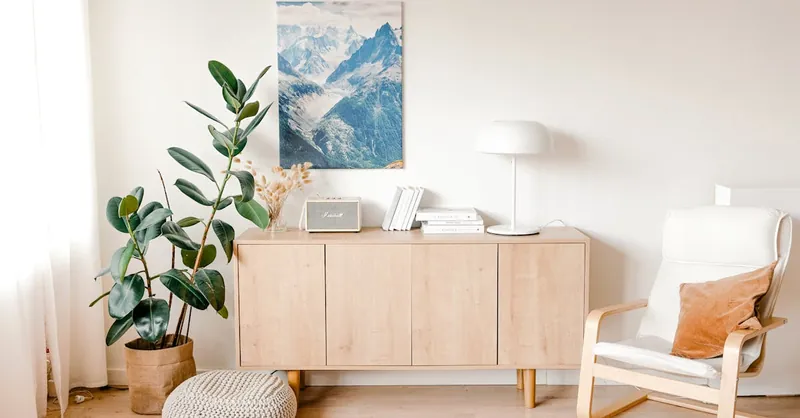
Image courtesy of Antoni Shkraba Studio
Creating Rituals to Honor Memories Beyond Physical Objects
One powerful way to balance minimalism and sentimental value is by shifting your focus from physical possessions to meaningful rituals that celebrate memories and connections without adding clutter. Engaging in practices like journaling, storytelling, and experience-based commemorations allows you to honor your past and cherished relationships in a way that enriches your life emotionally while staying aligned with minimalist ideals.
Journaling as a Memory-Keeping Practice
Writing about your memories, feelings, and the stories behind cherished moments is a simple yet profound ritual. Keeping a dedicated sentimental journal or digital diary helps preserve the essence of your experiences without relying on tangible items. Reflective journaling encourages mindfulness, deepens emotional processing, and transforms memories into living narratives that continue to grow with you. Over time, your journal becomes a personalized treasure trove of life’s meaningful events—always accessible, yet free from physical clutter.
Storytelling and Sharing Memories
Verbal storytelling is another enriching ritual that transcends the need for material keepsakes. Whether through conversations with family, recorded interviews, or even community gatherings, sharing the stories behind sentimental objects or life milestones keeps memories vibrant and alive. This practice not only strengthens bonds with loved ones but also nurtures a sense of belonging and legacy—one that minimalism can beautifully accommodate by emphasizing human connection over accumulation.
Experience-Based Commemorations
Rather than collecting objects, consider marking important occasions and relationships with experience-based rituals. This could be:
- Holding annual gatherings or traditions that honor a loved one’s memory
- Creating special moments like walks, meals, or creative activities linked to meaningful events
- Establishing mindful quiet times or meditative practices to reflect on personal growth and remembrance
These rituals foster emotional richness and continuity without physical accumulation, perfectly complementing a minimalist lifestyle focused on intentional living.
By integrating these emotionally fulfilling, non-material rituals, you can celebrate your past and nurture your sentimental connections in ways that support simplicity, clarity, and mindfulness—core pillars of minimalism. This approach offers a sustainable alternative to collecting and storing physical items, proving that honoring memories transcends the need for tangible keepsakes.

Image courtesy of charan sai
Managing Gifts and Heirlooms: Communicating Boundaries While Respecting Family Traditions
Navigating the emotional landscape of gifts and inherited heirlooms can be one of the most delicate aspects of balancing minimalism with sentimental value. When decluttering items that come from loved ones—whether they are cherished gifts or treasured family heirlooms—it’s crucial to communicate your boundaries clearly and compassionately. This ensures that your minimalist goals are understood and respected without hurting relationships or dismissing important family traditions.
Strategies for Respectful Communication and Boundary Setting
-
Be Honest and Gentle: Explain your minimalist lifestyle and the reasons behind your decisions with kindness and empathy. Emphasize that your choice to declutter or limit possessions doesn’t diminish the emotional significance of these gifts or heirlooms.
-
Set Clear Guidelines: Let family members know in advance about your approach to gifted or inherited items. For example, you might say, “I deeply appreciate your thoughtful gifts, and to keep my home peaceful, I focus on keeping only items that fit my minimalist vision.”
-
Offer Alternatives: Suggest meaningful ways to honor family traditions without accumulating physical clutter. This could include requesting experiences instead of tangible gifts, or proposing the creation of a digital family archive to preserve heirlooms’ stories.
-
Involve Loved Ones in Decisions: When possible, collaborate on the fate of heirlooms to ensure mutual understanding and respect. Sharing stories behind these items can deepen emotional connections while deciding which pieces truly resonate with your current life and values.
By combining clear communication with empathy, you create a supportive environment where both your minimalist journey and family heritage coexist harmoniously. Respecting emotional sensitivities while affirming your boundaries not only preserves your relationships but also empowers you to live intentionally, surrounded by only the most meaningful possessions.
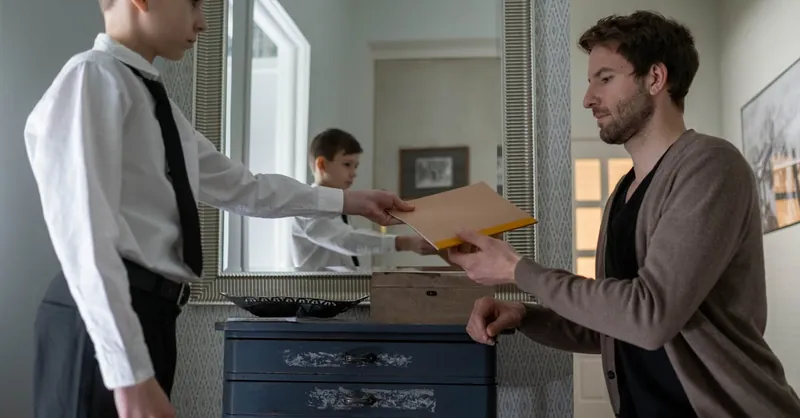
Image courtesy of cottonbro studio
Building a Sentimental Inventory: Organizing and Cataloguing Your Keepsakes for Clarity and Ease
Creating a sentimental inventory is a powerful step towards balancing minimalism with the emotional value of your keepsakes. This process involves systematically organizing and cataloguing your treasured items, which provides clarity about what you own and why each piece matters. A well-maintained inventory not only reduces the overwhelming feeling of sentimental clutter but also helps you intentionally curate a collection that truly reflects your values and memories.
Tools and Methods for Effective Sentimental Inventory Management
- Inventory Spreadsheet or Digital Database: Use a spreadsheet or specialized apps designed for personal inventory management (such as Sortly, Memento Database, or a simple Google Sheet). Catalog each item with:
- A clear description (e.g., “Grandmother's silver locket”)
- Its emotional significance or story behind it
- Location within your home (e.g., memory box, display shelf)
- Condition or usability status
- Date acquired or from which occasion
This organized data makes it easy to review and reassess keepsakes periodically, helping prevent unconscious accumulation.
-
Photographic Documentation: Take high-quality photos of your sentimental items and link these images to your inventory entries. Visual records accelerate decision-making by allowing you to appreciate and reflect on items digitally, limiting the need for constant physical handling.
-
Categorization by Theme or Relationship: Group items into categories such as family heirlooms, travel souvenirs, childhood memorabilia, or special gifts. This classification supports a targeted approach to preservation and display, enabling you to focus on what aligns with your current minimalist intentions.
-
Regular Inventory Reviews: Schedule quarterly or bi-annual reviews of your sentimental inventory to evaluate if items continue to add value to your life. Use these moments to decide if some keepsakes can be digitized, repurposed, or gracefully passed on, ensuring your collection remains meaningful and manageable.
By implementing an organized inventory system, you gain insight into your sentimental possessions, reduce decision fatigue, and cultivate a minimalist home that honors memories thoughtfully and sustainably. This clarity ultimately empowers you to live with intention—surrounded only by keepsakes that enrich your life and support a peaceful, simplified environment.
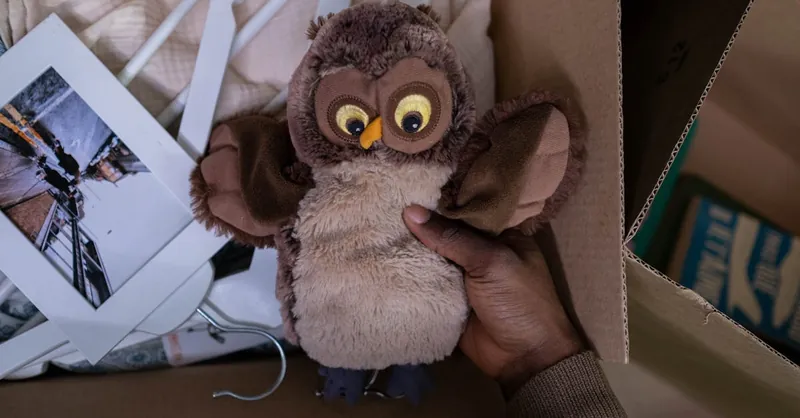
Image courtesy of cottonbro studio
Overcoming Emotional Barriers: Tips for Letting Go Without Regret
Letting go of sentimental items often triggers emotional barriers such as guilt, fear, or anxiety, which can make decluttering feel overwhelming. To embrace minimalism while honoring your feelings, cultivating the right mindset and practicing self-compassion are essential for easing the emotional weight of parting with keepsakes. Acknowledging and addressing these internal blocks empowers you to make intentional choices without regret or shame.
Mindset Shifts to Release Emotional Attachments
- Recognize the Difference Between Memories and Objects: Understand that memories live within you, not solely in physical items. Items act as triggers but are not the source of your feelings or identity. This mental separation helps reduce overattachment.
- Focus on What Serves Your Present Life: Prioritize items that actively add joy, meaning, or utility now rather than holding onto things for "just in case" reasons or out of obligation.
- Embrace Impermanence: Accept that life is fluid and possessions can change form or be let go without diminishing the significance of your experiences or relationships.
- Shift From “Loss” to “Gratitude”: Instead of viewing letting go as loss, reframe it as creating space for new memories and growth, fostering appreciation for what an item represented rather than clinging to the object itself.
Practicing Self-Compassion When Parting With Keepsakes
- Give Yourself Permission to Feel: It’s normal to experience sadness or nostalgia. Allow these emotions without judgment, knowing they are part of a healthy process.
- Set Gentle Deadlines: Avoid endless procrastination by creating realistic time frames for decision-making, giving yourself the grace to revisit emotions but also move forward.
- Use Affirmations: Remind yourself statements such as “I am honoring my memories, not my clutter” or “Letting go allows me to live more freely and fully.”
- Seek Support When Needed: Talk to trusted friends, family, or minimalism communities who can validate your feelings and encourage your choices.
By integrating these mindset shifts and self-compassion techniques, you can confidently and peacefully part with sentimental items while minimizing regret. This emotional resilience strengthens your minimalist practice, allowing your living space to reflect both simplicity and meaningful connection.
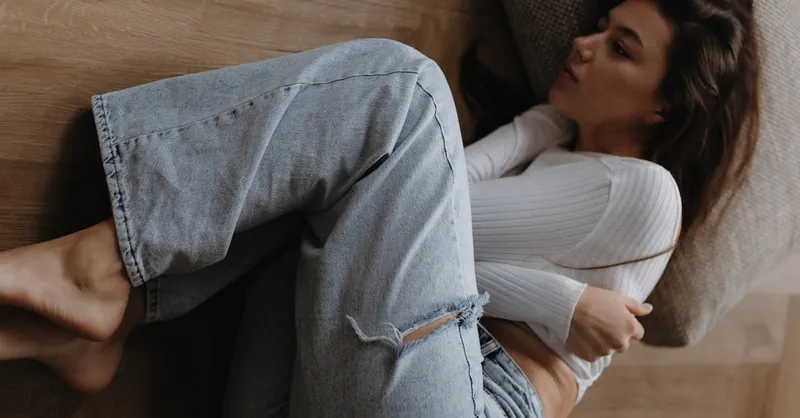
Image courtesy of Alina Matveycheva
Maintaining Balance Long-Term: Integrating Sentimental Mindfulness into Your Minimalist Lifestyle
Sustaining a harmonious balance between minimalism and sentimental value requires ongoing reflection and adaptive mindfulness as your life, priorities, and attachments naturally evolve. Minimalism is not a fixed destination but a flexible, intentional practice that benefits greatly from regular reassessment of your emotional connections to possessions. By cultivating sentimental mindfulness, you ensure your living space remains both clear and meaningful throughout different life stages, preventing clutter from creeping back unnoticed.
Practices for Continuous Reflection and Adjustment
-
Schedule Routine Emotional Check-Ins: Periodically revisit your sentimental items with a compassionate mindset. Ask yourself whether each keepsake still resonates with your current values and brings genuine joy or comfort. These check-ins help you keep your collection authentic and avoid emotional accumulation driven by habit or guilt.
-
Embrace Change as Part of Minimalism: Recognize that what once held powerful meaning may shift in importance over time. Being open to reassessing your possessions—including heirlooms, gifts, or memory boxes—allows you to release items gracefully when their role in your life changes, creating space for new meaningful experiences.
-
Adapt Your Preservation Methods: As technology and your lifestyle evolve, update how you archive and display sentimental items. For instance, transition more keepsakes into digital formats or rotate your meaningful displays periodically to match your living environment and mindset.
-
Maintain Clear Boundaries and Limits: Reaffirm the physical or digital boundaries you’ve set for sentimental belongings. Whether it’s a specific size of a memory box or a set amount of digital storage, these limits serve as practical guardrails against unintended clutter.
-
Practice Gratitude and Intentionality Daily: Incorporate mindfulness habits such as expressing gratitude for memories and intentionality about possessions. This mental habit strengthens your emotional resilience toward letting go, aligning sentimental value with minimalist clarity.
By integrating these long-term sentimental mindfulness practices, you nurture a minimalist lifestyle that honors your emotional landscape without sacrificing simplicity or peace. This dynamic approach supports a home environment where memories are valued consciously, and possessions serve your life purposefully—ensuring your minimalist journey remains uniquely fulfilling and sustainable.
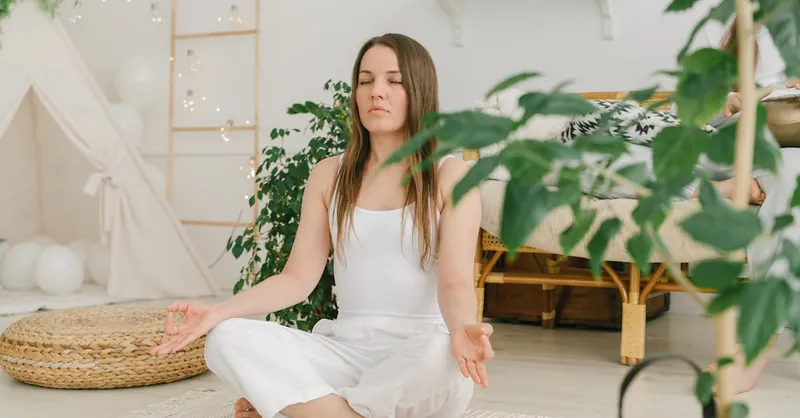
Image courtesy of Mikhail Nilov
